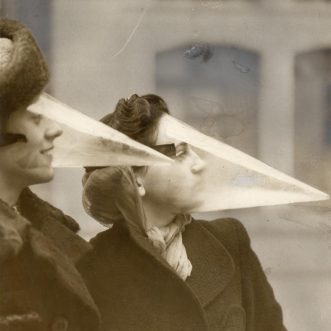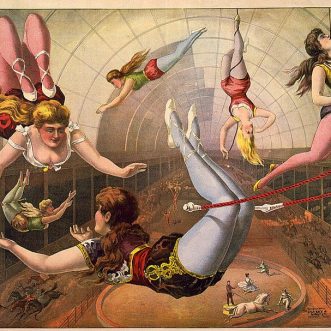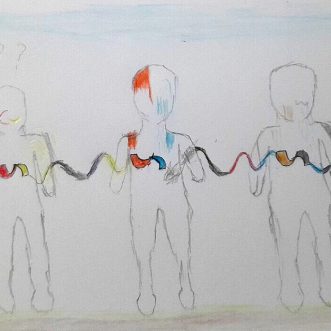
Stakeholders
I found this on the Corporate Accountability Network‘s site the other day: “The Corporate Accountability Network thinks that every company, … Read More “Stakeholders”

I found this on the Corporate Accountability Network‘s site the other day: “The Corporate Accountability Network thinks that every company, … Read More “Stakeholders”

“The possibilities for progression are not, by any means, exhausted. Technological development is always offering new opportunities for original designs. But imaginative design always develops in tandem with improving technology, and can never be an end in itself.” Dieter Rams, Design Principle number 1.
New technologies allow us to re-think or even re-imagine how we do things, so we can do them better – whatever ‘better’ means: faster; slower; more consistently; more easily; more naturally; more thoroughly.
The metal case meant the radiogram could take up less space, and also meant the speakers put out a truer sound. But a metal lid rattled when the machine was used. Plexiglass solved that problem, and in doing so meant that the controls could move to the top of the machine, which in turn meant that how to use it could become more obvious to anyone who’d never seen it before.
True advances require both novel technology and imagination, the two things bouncing creatively off each other, opening up possibilities. Imagination makes technology human.
Without both imagination and advancing technology, all we can do is embellish, or worse, over-complicate. Neither of which adds value.

We are living in interesting times, and its easy to feel somewhat powerless to affect them. There is one significant … Read More “Purchasing Power”

A metaphor for the relationship your business creates with its clients could be seen as fluff. A nice marketing touch. Something to hang a campaign on, to help people choose you over others.
But it can and should go much deeper than that.
Blue Rocket Accounting used their metaphor (“we are Mission Control to your space mission”) to standardise their services, to define the Roles people working in the business play for clients and to design how they deliver on that promise. The metaphor becomes shorthand for the purpose – ‘what we do for the people we serve’.
That’s not fluff. That’s the foundation.

You’ve done your research, you’ve talked to people, you’ve tried to get inside the heads and hearts of the people you want to serve. You’ve come up with something you think they’ll want.
But no matter how much of that you do, you can never be sure that the product or service you’ve invented is going to take with its intended market, and no amount of fettling and polishing is going to tell you whether it will or not. The only way to find out is to go for it and put it out there, accepting that it might not work.
This can feel like you’re courting failure, but actually, you’re inviting information. Whatever happens to your product after launch, you can learn from it and work on something better.
The Pioneers launched yesterday. I wouldn’t say it was conclusive, but it’s looking promising, and I’m definitely learning.

I mentioned Tony’s Chocolonely 100% slave-free chocolate in an earlier post this week. So, of course I had to try it.
It’s good. Very near in taste to my favourite brand.
Which means I can happily carry on eating chocolate.
Phew!
Because the alternative was giving it up.

There’s a visible gap between the hands of the free-falling trapeze artist and those of her companion coming up to catch her. A gap that makes my stomach lurch just looking at it.
That gap is filled with trust. Trust that a promise made is a promise kept.
What happens, when trust gets eroded? When we discover that institutions and corporates aren’t keeping the promises they made? That the ham we’ve just bought that doesn’t actually contain ham? The car we’ve just bought puts out more emissions than we were sold? The pension we were relying on has been appropriated by the firm we’ve worked for for 40 years? The news we read on social media and in the papers is fake?
When trust disappears, we stop taking risks. We narrow our perspective. We lower our expectations. We start accepting worse instead of expecting better. Cynicism starts to poison everything.
The only antidote is to make our own promises, the biggest we can, in spite of that stomach-lurching gap, and keep them every time.

Why do I need process if I have good people?
As Japanese businesses know well, process embodies the ‘thing’ a group of people are working on – whether that’s a play, a car, a building or a service.
This allows a certain level of separation between ‘what I am trying to achieve’ and ‘who I am’, which makes it much easier for everyone involved to discuss and agree improvements, because it’s ‘the thing’ that’s being judged, not ‘me’.
Free from the fear of personal criticism, your good people can eagerly look for ways to make things better.

Most modern businesses, large and small, involve interactions of some kind – with other employees, customers, and suppliers.
These interactions require emotional labour – listening; empathising, being present to the other person as well as intellectual labour – pattern-matching, imagining potential scenarios, reviewing possible solutions etc..
Without a process interactions become harder than they need to be, because every interaction is treated as unique, where in fact they fall into common patterns, with unique features.
Process captures what has to happen in the common patterns, giving your people a framework to work from that doesn’t need much thinking about.
Process frees up intellectual and emotional energy to be spent on the unique and personal aspects of regular interactions, and on the exceptions that either prove the rule, or highlight the start of a new pattern.
With their heads cleared of the routine, your good people can use their hearts to exceed your promises.

“It’s not what you do, it’s the way that you do it. That’s what gets results.”
I disagree.
“The way we do things round here” clearly reflects the culture of an organisation or institution. So does “What we do around here” – the things an organisation or institution chooses to do, and the things it decides to leave out.
So what really gets results is to be clear about the promises that are being made, and intentionally design the ‘what’ to deliver on that in a way that embodies the ‘way’.
Not to be a straightjacket or monorail, just so it isn’t only in the heads of the people who happen to be around right now.
Thanks to Radio 4’s Thought for the Day for inspiring this one.